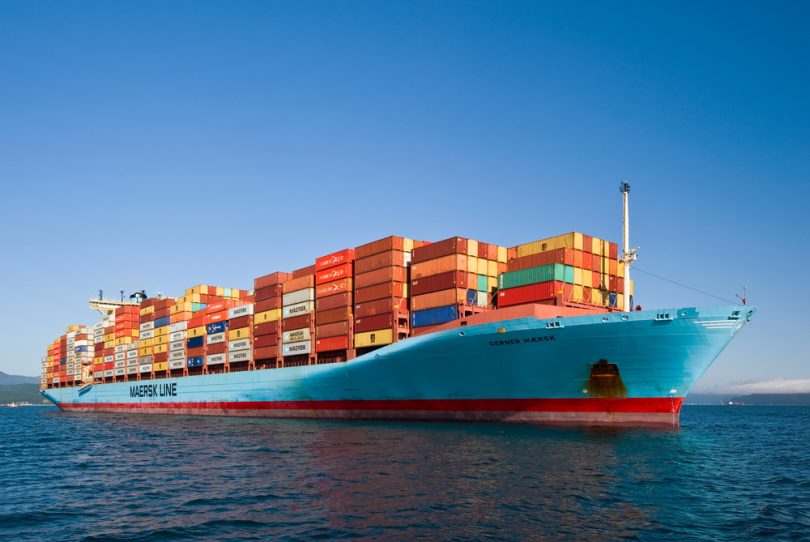Yesterday there was a subcommittee hearing at the US Congress re counterfeit products. Mike White of Maersk explained how the IBM/Maersk joint venture will help address counterfeiting.
Robert Chiavello of Nuby Law outlined how counterfeit products that are sold to US customers are often shipped directly from China. The concern is both the breach of intellectual property plus the health and safety issues from using sub standard materials. He gave the example of pacifiers which can become a choking hazard. And the fact that there is no recourse where the infringer is overseas.
Below is a transcript of the Maersk statement.
Introduction
My name is Mike White. I’m head of global trade digitization for Maersk. Before moving to my current role. I was president of Maersk Line North America for the past eight years, and I’ve had the pleasure of working in this industry for over 37 years. Thank you very much for the opportunity to testify this morning.
Background
In a global economy, supply chains are of critical importance. It is estimated that over 16 trillion dollars worth of goods cross International borders each year and more than 80% of those goods are carried by the ocean shipping industry. Over the past five years global container volumes have increased on average of three-point-seven percent per year. Moving goods from point A to point B involves many parties who are separate, but dependent upon one another.
The inefficiencies
Importers and exporters, freight forwarders, Customs brokers, ports and terminals, ocean carriers, customs and government authorities, inland transportation providers, financial institutions, and others, all gather discrete sets of sometimes overlapping information. Which they share using a convoluted web of individualized formats and aging technologies.
This inconsistent flow of information across organizational boundaries hampers the efficient flow of goods. But through a collective complexity driven inertia supply chain participants persist in their outdated practices, perhaps this is because they trust that, flawed though it may be, the system will deliver ultimately a container from point A to point B, and they can’t afford to experiment with a system that may fail to do so.
The industry operates today much as it does or has since the introduction of shipping containers in the 1950s. Many processes are manual, time-consuming, and too often paper-based with transactions still frequently coming today via fax machine. The cargo on any given container vessel or voyage generates a mountain of documents, many of which are sent to the relevant container’s destination by some other means. Container shipments can often be delayed in port because necessary paperwork has not caught up with the goods they carry.
In a Fredo survey recently cited by The Economist, two-thirds of respondents said over a quarter of their deliveries abroad arrived late. Nearly half said they spend more than two hours on paperwork when arranging a given shipment and the vast majority of respondents had real difficulty tracking goods in transit.
In an industry where global transport costs a 1.8 – 2 trillion dollars annually, administrative costs can sometimes exceed the end-to-end transport cost for a given container and overall inefficiencies are estimated at 15 percent or higher.
Benefits of a solution
The World Economic Forum estimates that by reducing barriers within International Supply chains, global trade could increase by up to 15%, boosting economy and creating jobs. These barriers have proven incredibly difficult to surmount as participants are trapped by the layered complexity of entrenched methods.
Everyone agrees that there must be a better way, but no single participant is able to effect change because of the overarching desire to stick with what is known to work, even if not very well. Over an experiment that could fail with disastrous and cascading consequences.
IBM Maersk Joint Venture
In 2016, Maersk and IBM began a collaboration with the goal of digitizing the global Supply Chain.
To begin, we analyzed a number of current Supply chains to understand the current challenges and specific areas of complexity. One of these involved the shipment of avocados moving from Kenya to the Netherlands. This one container involved over 30 different actors or entities, more than 100 individuals ,and over 200 separate exchanges of information documentation. The vast majority of which were completely manual, paper-based, and extremely time consuming.
We soon realized that no sustainable solution can exist for streamlining the entrenched complexity without unprecedented buy in from the entire industry. In our analysis, an open and neutral industry platform consisting, at its core, of a worldwide network of interconnected supply chain participants, is by far the best way to drive efficient, transparent, and secure global trade.
The trust necessary to build this network would not likely exist without blockchain technology. In January of this year Maersk and IBM announced our intention, subject to receipt of all applicable regulatory approvals, to form a joint venture to implement this global platform.
The platform
The platform will follow the flow of cargo from source to destination as empty containers are provisioned and transported from a warehouse, as containers of stuff are transported to a port. Loaded on board a vessel, export regulatory clearance, and continuing on the vessel to the import side. Will follow the flow of cargo through customs clearance and ultimately delivery to the final consignee and the empty containers return to a depot.
The platform will do this by leveraging network participants who both make information available and consume information by others. Blockchain enables this unprecedented collaboration by ensuring the security, trustworthiness, and permissioned accessibility of sensitive participation information, even as that information is distributed across heretofore segregated enterprises.
Participants will be able to go to one place to track real-time status of a container and to locate and transact with up-to-date trustworthy trade information. Blockchain is a critical ingredient. It creates immutable record of transactions which enables the ecosystem to track the exchange of critical information, like records of inspections, bills of lading, Customs documents.
Throughout the trade each participant has real-time visibility access to supply chain according to permission levels, thus by validating the participants, authenticating transactions, distributing information, and maintaining unalterable records that are located or accessible through the platform.
At the end of the given shipment these immutable records will provide one version of the truth of how a container was transported from beginning to end and the documents submitted to the platform could be actioned and stored using blockchain technology.
This means that once the document has been certified by a government agency the slightest alteration to that document will be exposed and rejected as different from the original.
This will obviously have lasting benefits towards fraud detection and prevention.
The result previously unattainable information backbone of global supply chain, encompassing the Milestones document in a structured form, Customs filings, and many more solutions.
Access to this platform will give traders and transportation real-time end-to-end visibility and permission access to information about cargo shipment such as status of whereabouts of containers, shipping milestones, and trade documentation.
As the network grows its benefits will multiply and it will generate billions of dollars in savings for all industry participants along with entirely new approaches to Global Logistics.






